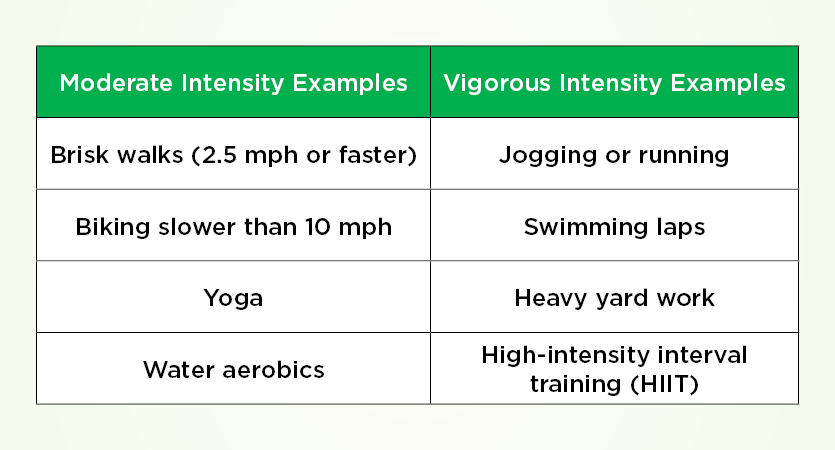
This post was written by Sean Collins, PT, DPT, COMT, CEAS I, physical therapist, and Jithmie Jayawickrema, PT, DPT, OCS, physical therapist, Parkview Therapy Services Southwest.
We hear it all the time, “You need to exercise more!” But what does that mean? What does more exercise look like? And if you already have a good exercise routine in place, how do you know when you’ve done enough? Luckily, there’s research to help guide us through these decisions. The United States Department of Health and Human Services (HHS) released the Physical Activity Guidebook for Americans, 2nd Edition, which includes guidelines for exercise. Here are a few of our favorite takeaways from these recommendations.
Physical activity has a huge impact
Did you know that about 80% of adults are not meeting the recommended guidelines for muscle-strengthening and aerobic-based activity? And the data shows that our physical activity levels can have a direct effect on our health outcomes.
In 2018, it was estimated that among 117 million American adults, half of them had one or more preventable chronic diseases. According to the National Council on Aging, the most common chronic diseases in people over age 65 are:
- Hypertension
- High cholesterol
- Arthritis
- Coronary heart disease
- Diabetes
- Chronic kidney disease
- Heart failure
- Depression
- Alzheimer’s disease
- Chronic obstructive pulmonary disease
Of those ten chronic conditions, seven are heavily influenced by physical activity.
Additionally, studies have shown that sedentary behavior is related to all-cause mortality, while adding moderate-to-vigorous activity to your daily life has been shown to decrease all-cause mortality.
Activity guidelines
Here are the key guidelines for adult physical activity, according to the HHS:
- Adults should move more and sit less throughout the day. Any physical activity is better than none.
- Adults should aim for 150 minutes (2 hours and 30 minutes) to 300 minutes (5 hours) of moderate-intensity aerobic activity a week.
- Adults should aim for 75 minutes (1 hour and 15 minutes) to 150 minutes (2 hours and 30 minutes) of vigorous-intensity aerobic activity a week.
- Adults should incorporate muscle-strengthening activities of moderate or greater intensity that involve all major muscle groups (chest, back, arms, core and legs) two or more days a week.
Where to start with physical activity
It can be hard to know how to get started with an exercise routine. Here are some suggestions of moderate and vigorous activities you can try:

Advice as you get started with exercise
If you can’t meet the guidelines, you are not alone! It’s also common for beginners to feel intimidated by the thought of an exercise routine. We recommend starting small and building up.
When in doubt, walking is a great place to start. Set an alarm to get up and move every waking hour. This is especially important for people who have office jobs and have to sit for prolonged periods.
Studies have shown that a higher daily step count can lower your risk of all-cause mortality. Set a goal and use your smartwatch to keep track of your daily step count. Add more steps to your day by:
- Scheduling daily walks
- Parking farther away
- Taking the stairs
If you find yourself struggling to get motivated, try making it a family affair! The best exercise is the one you’ll stick to, so it’s important to discover a movement that feels good for you. Remember that something is better than nothing.
If you’re already meeting these goals, use these guidelines as a reminder to stay on track, or an indicator if you need to take more breaks.
If you’re looking for individualized guidance on how to start or progress your physical activity safely, reach out to your physical therapist. We’re always happy to help patients identify ways to move their bodies and promote physical well-being.



